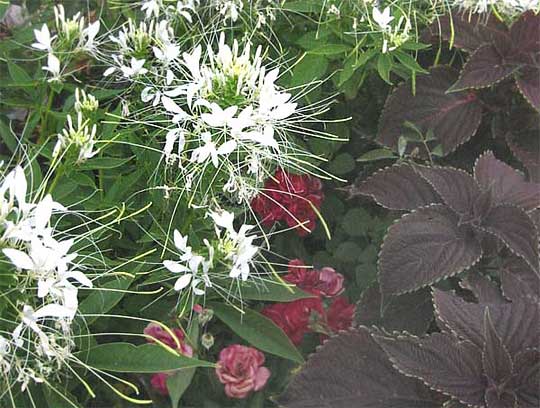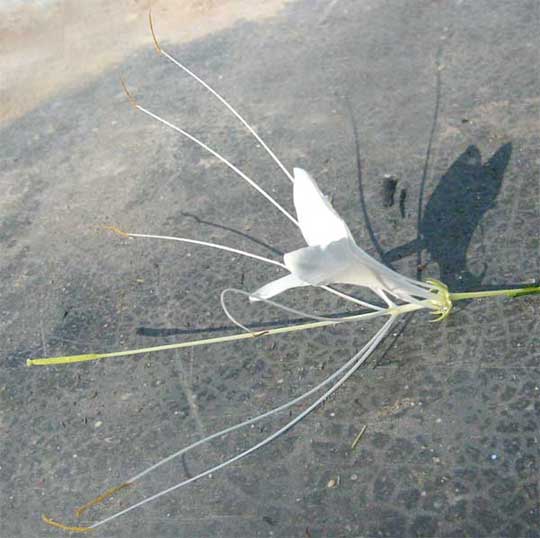Excerpts from Jim Conrad's
Naturalist Newsletter
from the April 7, 2008 Newsletter written in the community of 28 de Junio, in the Central Valley 8 kms west of Pujiltic, elev. ~700m (2300ft), ~N16.331°, ~W92.472°; southeastern Chiapas state, MÉXICO
GYNANDROPSIS SPECIOSA
In the Mexican countryside around houses of regular people I can't recall having ever seen a flower garden whose plants were set in straight rows. Here if one day you happen to gain possession of a handful of seeds, a rootstock or a slip, you just put it where it strikes you at the moment to put it, maybe it'll grow and maybe not, who knows, no big deal, but it'll know it's welcome by the frequent watering and hoeing it'll get. That's the way it was with both my grandmas and I think that once it was the same with most North Americans. Rows came later, with houses in rows, with assembly lines, with robotic life.

Above you can see a corner of my neighbor's flower garden. Chickens and baby turkeys scratch around it all day long, an occasional pig wrecks havoc, there's the usual plastic bottles and bags littering the soil and it has no clear boundaries, but what a pleasure just walking by it several times each day, soaking up all that color and informal exuberance!
The white flowers at the left elong to GYNANDROPSIS SPECIOSA. It's a lot like the Giant Spiderflower, Cleome spinosa, often grown in Northern gradens, but look at the flower from it:

In that picture of a teacup-size flower, the yellowish, elongate ovary -- which will develop into a fruit very similar to a mustard fruit -- is at the far left, at the end of a long, straight, stiff stalk referred to technically as a stipe or gynophore. The Giant Spiderflower also has that, but notice in our blossom that the long, spider-leg-like, white filaments join the gynophore a little above where the petals arise. That's enough to throw this plant into a whole different genus.
I just can't find an English name for this plant. It's not much known in English-speaking countries. That makes it even nicer to find it here.